The Art of Growing Stunning Blue Hydrangeas
Discover which hydrangeas will produce gorgeous blue flowers and what conditions they need
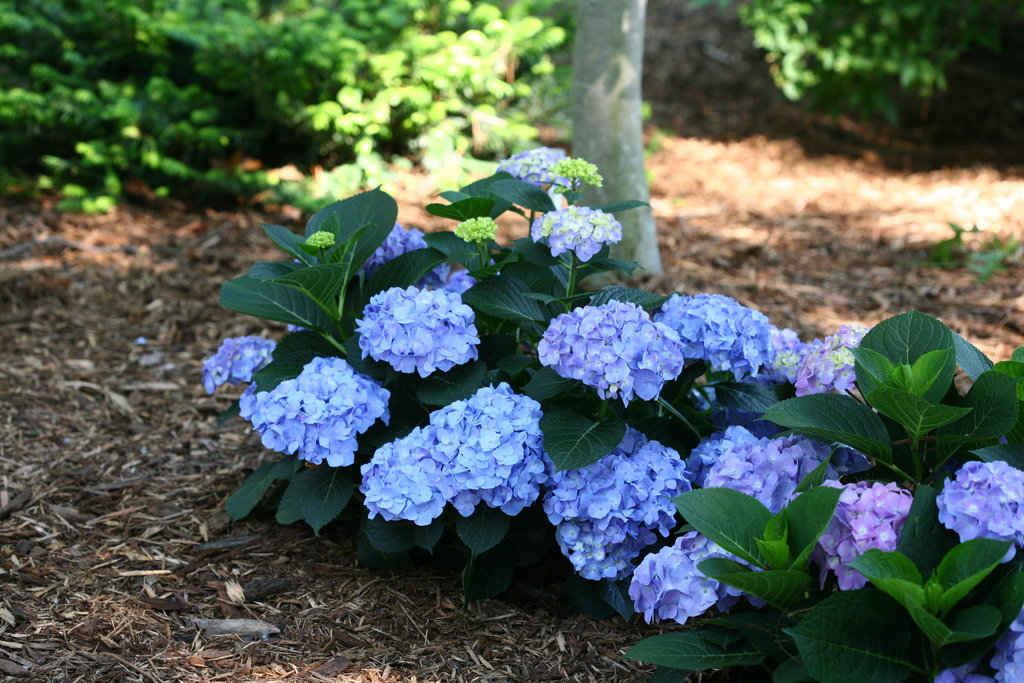 Buy blue hydrangeas - Order online and have them shipped right to your door
Buy blue hydrangeas - Order online and have them shipped right to your door
Hydrangeas are some of the most sought-after flowering shrubs due to their incredible blooms and versatile nature. One of their unique aspects is their ability to change color, especially shifting from pink to mesmerizing shades of blue. Here you'll discover several blue hydrangea varieties that will produce gorgeous blue flowers. Plus you'll get tips for how to how to grow blue hydrangeas effectively.
THE SCIENCE OF HYDRANGEA COLOR
The color of bigleaf and mountain hydrangeas, in particular, can change depending on the soil's chemistry. In addition, the genetics of the specific plant will influence color intensity.
Here's a quick explanation:
- Blue flowers occur in acidic soil for hydrangeas (below 6.5 pH).
- Pink flowers occur in alkaline soils (above 7.5 pH).
- Mixed colors or purple flowers happen in neutral soils (6.5 to 7.5 pH).
So why does soil pH determine color? In acidic soil for hydranges, aluminum is more readily available for them to absorb. The aluminum interacts with the pigments in the petals, leading to a stunning blue color.
Important: Only bigleaf and mountain hydrangeas can change their color in a predictable, controllable way. Smooth and panicle hydrangeas undergo some color change as they age, but their flowers cannot be turned blue.
Related: 6 Types of Hydrangeas Demystified
BEAUTIFUL BLUE HYDRANGEAS
Try these Proven Winners® blue hydrangea varieties in your garden:
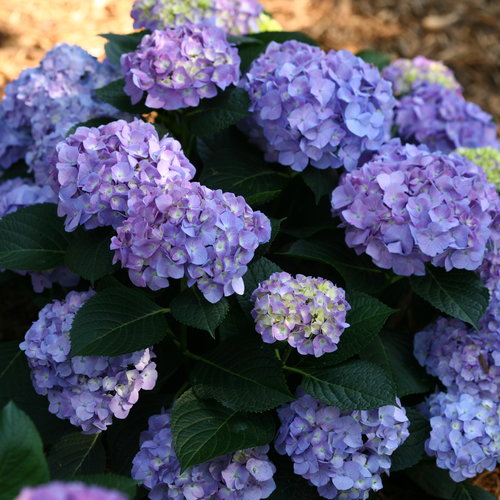 Let's Dance® Blue Jangles®Reblooming Hydrangea Hardy in zones 5 - 9 A popular rebloomer with a tight, compact habit. It's large, full flower heads turn deep blue in acidic soil for hydrangeas, but are pink in alkaline ones. This performer blooms reliably on both old and new wood even in challenging conditions like zone 5. |
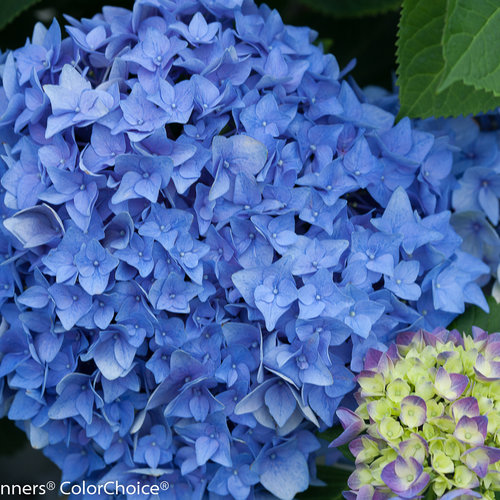 Let's Dance® Rhythmic Blue®Reblooming Hydrangea Hardy in zones 5-9 An easy-to-grow hydrangea that's great in cold weather and doesn't need pruning. Enjoy full mophead flowers that are either pink or brilliant blue. This variety is tough in harsh Midwestern winters and reblooms for months of colorful flowers. |
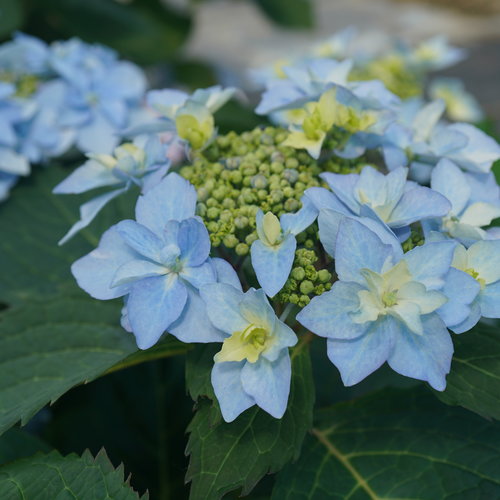 Tuff Stuff Ah-Ha®Reblooming Mountain Hydrangea Hardy in zones 5-9 A consistent bloomer, producing waterlily-like double florets that fluctuate between pink and blue, depending on the soil's chemistry. Reblooms prolifically on new growth throughout the summer. Plus, the buds are more cold-tolerant, which means it blooms well even in zones 5 and 6. |
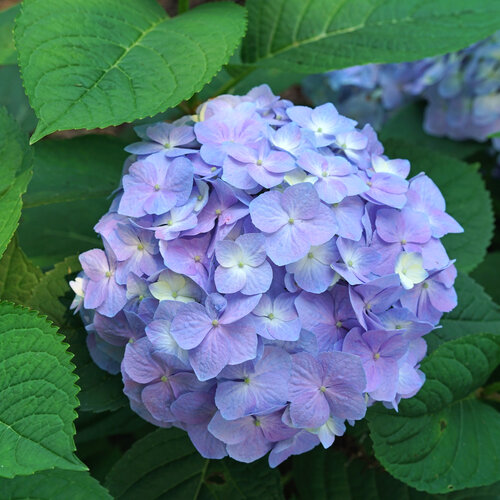 Let's Dance Sky View®Reblooming Hydrangea Hardy in zones 4-9 Renowned for its consistent blooms, regardless of location, this reblooming hydrangea is also quite resilient. This plant is easy to change color and has beautiful sky-blue flowers with green centers. The compact habit makes it suitable for both container gardening and landscapes. |
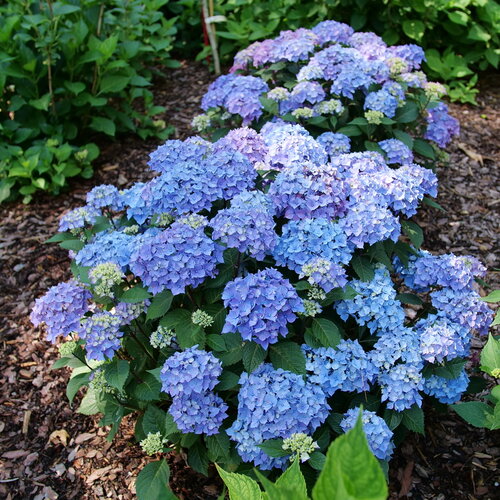 Let's Dance Lovable™Bigleaf Hydrangea Hardy in zones 5-9 With the right care, this hydrangea's large flowers will shift to a captivating blue, making it truly stand out. It's a beautiful and reliable choice for garden borders, containers, or as a stand-alone accent. |
HOW TO ENCOURAGE BLUE HYDRANGEA FLOWERS
When you buy your hydrangea plants the flowers may be pink. Keep reading to learn how to grow blue hydrangeas and to change the color over time.
Determine Your Soil's pH
Understanding your soil's pH is essential when aiming to grow blue hydrangea varieties. Follow these simple steps to find out the pH level of your soil:
- Buy a soil test kit: You can purchase these kits at gardening stores or online. They don't cost much and are easy to use.
- Collect a soil sample: Take a small amount of soil from your garden using a clean trowel. For the best results, collect the sample from near your hydrangeas or from the spot you want to plant them.
- Conduct the test: Always follow the kit instructions, but generally, you'll mix your soil sample with a testing solution or place it onto a test strip.
- Read the results: After a specified time, the solution or strip will change color. Match this color to the provided chart to determine your soil's pH.
Remember, if you want blue hydrangeas, you'll need to have a soil pH of 6.5 or lower, and aluminum must be present.
Related: 10 Things to Know About Your Garden Soil
Adjust Your Soil's pH
So what if your soil pH isn't low enough for blue flowers? To turn hydrangeas blue, you'll need to make your soil more acidic.
You may have heard of tricks like adding coffee grounds, vinegar or even pennies or a bundle of rusty nails to the soil. However, it’s best to use aluminum sulfate, which is a proven method on how to grow blue hydrangeas when it comes to changing flower color.
Achieving the desired shade of blue in your hydrangeas is a process that requires patience. It may take up to a year for hydrangea flowers to transition to the stunning blue that gardeners covet.
Here are a few crucial points to keep in mind:
- Your hydrangeas won't turn blue instantly. The transformation is a gradual process that takes time.
- It might require multiple applications of aluminum sulfate to make your soil acidic enough for blue hydrangeas. Re-test your soil's pH and adjust your treatments as necessary.
- If your hydrangeas already bloomed pink, you probably won't see blue flowers until next year. Soil amendments affect the developing buds, not the flowers that have already bloomed.
- Be careful! If you lower the pH too much or too quickly, your plants may have trouble absorbing the nutrients they need. If the pH does become too low, apply lime to raise it back up.
IDEAL GROWING CONDITIONS FOR BLUE HYDRANGEAS
- Sunlight: Thrive in areas with morning sun and afternoon shade.
- Temperature: Prefer temperate climates, but can adapt to a range of zones.
- Soil: Fertile, well-draining soil rich in organic matter.
- Soil pH: Acidic soil (below 6.5 pH) is necessary for blue blooms.
- Water: Keep soil consistently moist. Hydrangeas need regular, deep watering but avoid waterlogging.
- Mulch: Use organic mulches to retain soil moisture, and regulate temperature.
FREQUENTLY ASKED QUESTIONS
How often should I apply soil amendments to maintain blue hydrangeas?
Apply soil amendments according to the product's instructions, typically once or twice a year. Test your soil's pH regularly to avoid over-acidification.
Can all hydrangeas change color or just certain types?
Not all hydrangeas change color. It's primarily bigleaf (Hydrangea macrophylla) and mountain hydrangeas (Hydrangea serrata) that can shift from pink to blue based on soil pH.
How can I ensure the blue color of my hydrangeas is vibrant?
To get a vibrant blue color, keep your soil consistently acidic, make sure your hydrangeas can access enough aluminum, and take good care of them with appropriate watering, sunlight, and nutrients.
Will my hydrangeas turn blue if I plant them in pots?
Yes, hydrangeas will turn blue in pots if you use a potting mix with an acidic pH and enough aluminum availability. Learn more about growing hydrangea in pots.
Can I change the color of my hydrangeas mid-season?
Changing the color mid-season is challenging, as soil changes affect developing buds. For a color shift, start adjusting the soil's pH before your hydrangea sets its buds.
How can I safely lower my soil's pH without harming other plants in my garden?
Use soil amendments specifically designed to lower pH, like sulfur or aluminum sulfate, and apply them directly around your hydrangeas. Avoid spreading these materials throughout the entire garden, which could harm plants preferring neutral or alkaline soil.
What should I do if my hydrangeas are not turning blue despite acidic soil?
Even with acidic soil, hydrangea blooms might not turn blue if aluminum is not available. If this is the case, consider applying an aluminum sulfate soil amendment.
Does the change in hydrangea color affect the health or growth of the plant?
The color change in hydrangeas is a natural response to soil conditions and doesn't negatively impact the plant's health or growth. It's a unique characteristic of certain hydrangea species.
Growing beautiful blue hydrangeas can indeed be an art, but with the right knowledge, it's within reach for many gardeners. Embrace the learning process, enjoy the journey, and prepare for a garden full of stunning blue blooms!
Buy Proven Winners plants:




